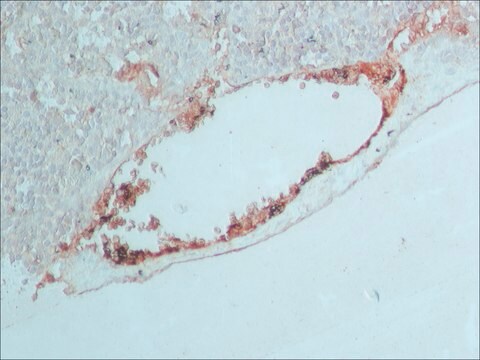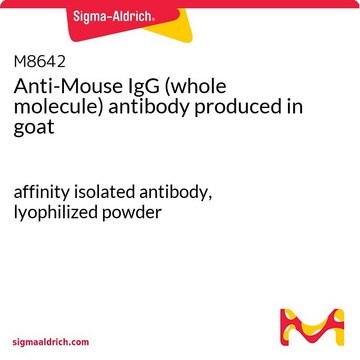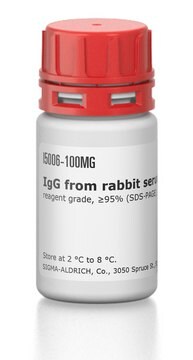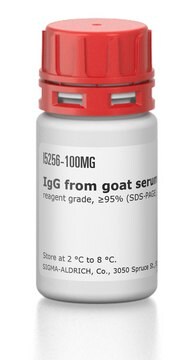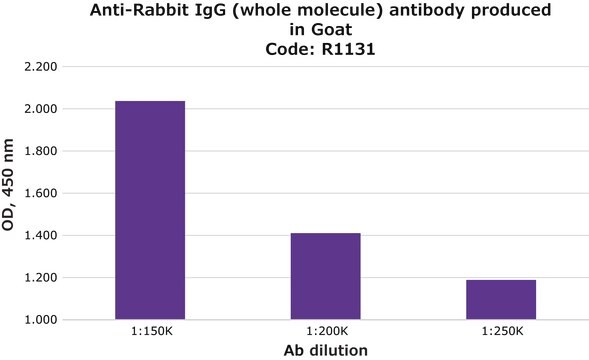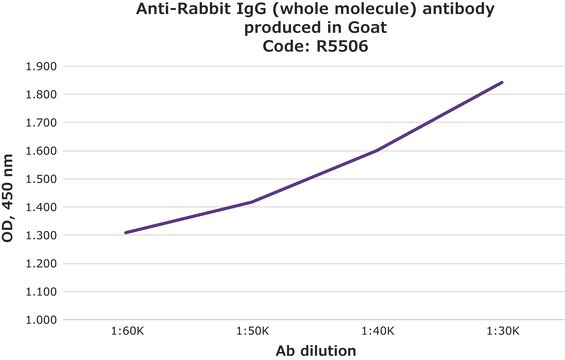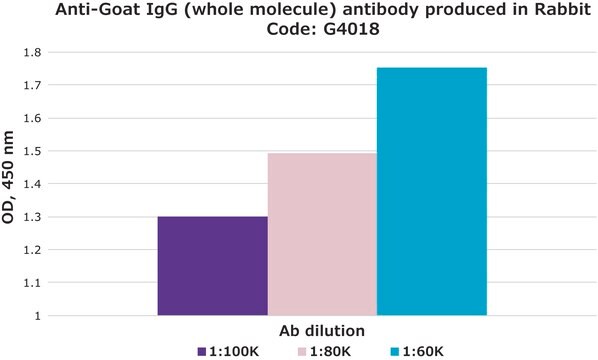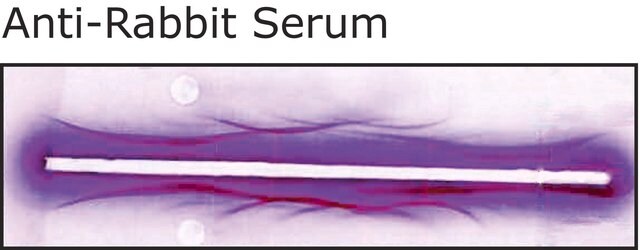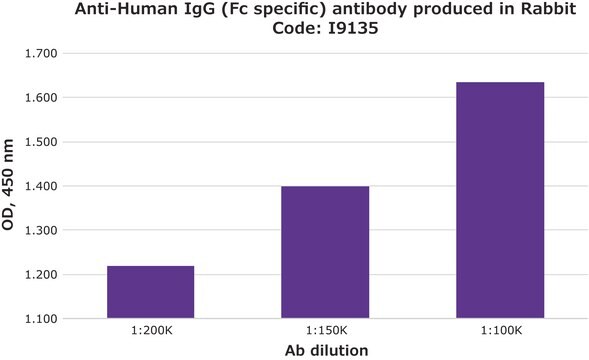R2004
Anti-Rabbit IgG (whole molecule) antibody produced in goat
affinity isolated antibody, lyophilized powder
Sinônimo(s):
Whole antibody
Faça loginpara ver os preços organizacionais e de contrato
About This Item
Produtos recomendados
fonte biológica
goat
Nível de qualidade
conjugado
unconjugated
forma do anticorpo
affinity isolated antibody
tipo de produto de anticorpo
secondary antibodies
clone
polyclonal
Formulário
lyophilized powder
técnica(s)
immunoelectrophoresis: suitable
temperatura de armazenamento
2-8°C
modificação pós-traducional do alvo
unmodified
Procurando produtos similares? Visita Guia de comparação de produtos
Descrição geral
Binds all rabbit Igs.
Especificidade
Anti-Rabbit IgG (whole molecule) antibody detects all rabbit Igs.
Aplicação
Applications in which this antibody has been used successfully, and the associated peer-reviewed papers, are given below.
Western Blotting (1 paper)
Western Blotting (1 paper)
Ações bioquímicas/fisiológicas
IgG antibody subtype is the most abundant of serum immunoglobulins of the immune system. It is secreted by B cells and is found in blood and extracellular fluids and provides protection from infections caused by bacteria, fungi and viruses. Maternal IgG is transferred to fetus through the placenta that is vital for immune defense of the neonate against infections.
forma física
Lyophilized from 0.01 M sodium phosphate, 0.015 M sodium chloride, pH 7.2
Reconstituição
Reconstitute with 0.135 M sodium chloride.
Exoneração de responsabilidade
Unless otherwise stated in our catalog or other company documentation accompanying the product(s), our products are intended for research use only and are not to be used for any other purpose, which includes but is not limited to, unauthorized commercial uses, in vitro diagnostic uses, ex vivo or in vivo therapeutic uses or any type of consumption or application to humans or animals.
Não está encontrando o produto certo?
Experimente o nosso Ferramenta de seleção de produtos.
Código de classe de armazenamento
11 - Combustible Solids
Classe de risco de água (WGK)
WGK 3
Ponto de fulgor (°F)
Not applicable
Ponto de fulgor (°C)
Not applicable
Equipamento de proteção individual
Eyeshields, Gloves, type N95 (US)
Escolha uma das versões mais recentes:
Já possui este produto?
Encontre a documentação dos produtos que você adquiriu recentemente na biblioteca de documentos.
Os clientes também visualizaram
Tianbo Sun et al.
Scientific reports, 6, 27482-27482 (2016-06-07)
A label-free optical biosensor is described that employs a silicon-based high-contrast grating (HCG) resonator with a spectral linewidth of ~500 pm that is sensitive to ligand-induced changes in surface properties. The device is used to generate thermodynamic and kinetic data
Xuefeng Wang et al.
Biosensors & bioelectronics, 26(5), 1871-1875 (2010-03-20)
Fluorescence-free biosensor arrays for protein detection directly measure the protein surface density, and do not require a fluorophore or enzyme label, and provide quantitative and consistent signals. However, few fluorescence-free biosensor protein arrays have demonstrated successful application in high-background samples
Samuel Sánchez et al.
Analytical chemistry, 80(17), 6508-6514 (2008-07-30)
The aim of this study was the fabrication and characterization of biomembranes by the phase inversion (PI) method followed by their subsequent casting onto screen-printed electrodes (SPE) for biomedical applications. The combination of multiwalled carbon nanotubes (MWCNT) as a transducer
Ishwar Gill et al.
Journal of cell science, 128(4), 768-780 (2014-12-21)
During cortical development, N-methyl-D-aspartate (NMDA) receptors (NMDARs) facilitate presynaptic terminal formation, enhance neurotransmitter release and are required in presynaptic neurons for spike-timing-dependent long-term depression (tLTD). However, the extent to which NMDARs are found within cortical presynaptic terminals has remained controversial
M P Oria et al.
Proceedings of the National Academy of Sciences of the United States of America, 97(10), 5065-5070 (2000-05-03)
The endosperm of a sorghum mutant cultivar, with high in vitro uncooked and cooked protein digestibilities, was examined by transmission electron microscopy and alpha-, beta-, and gamma-kafirins (storage proteins) were localized within its protein bodies. Transmission electron microscopy micrographs revealed
Nossa equipe de cientistas tem experiência em todas as áreas de pesquisa, incluindo Life Sciences, ciência de materiais, síntese química, cromatografia, química analítica e muitas outras.
Entre em contato com a assistência técnica

